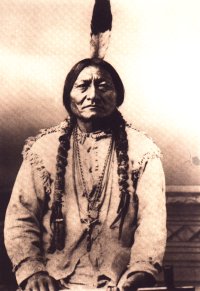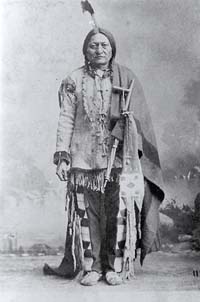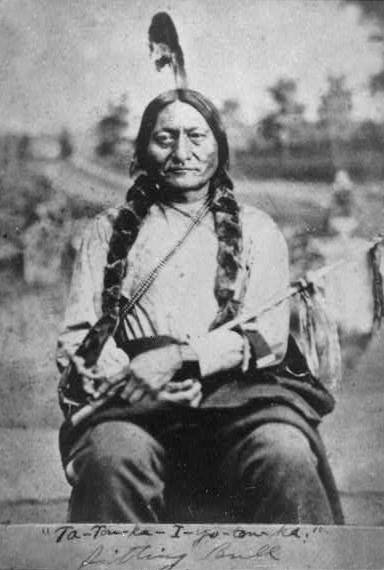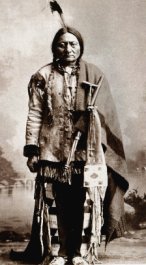Historical Photos
Historical Photos
Article Index:
While not always historically accurate, Edward Curtis’ large body of photos –more accurately called photogravures –offer a historic glimpse into the lives of more than 100 nartive american tribes at the turn of the 20th century. Now you can find more than 2,000 of them online and free to use in your classroom projects.
Ethnologist and photographer Edward S. Curtis resorted to controversial practices while documenting the traditions of Native American indian tribes in Canada and the western United States during the early 20th century. For instance, he often placed wigs on Native Americans as he staged photos, to create a more “authentic” image. Sometimes he posed a Blackfoot chief in a Sioux style headdress. Or dressed Cherokee people in traditional buckskins, when they had already been wearing cloth clothing for nearly a century.
In one image, he photographed a father and son in their tepee sitting next to the family alarm clock. Eager to document the customs of indigenous peoples, Curtis retouched that still image and removed the clock. Over the years, some have questioned whether Curtis was a legitimate ethnologist due to the fact that he manipulated his subjects and their surroundings.
Edward Curtis also took pictures of many sacred objects and ceremonies, which are considred controversial today, because many tribes feel they shouldn’t be on public display. However, there are no laws that prohibit them.
Curtis is believed to have created 40,000 to 50,000 negatives of North American Indians and at least 10,000 to 20,000 studio portraits, landscapes, Gold Rush and Harriman Expedition photographs. An extensive online archive of Curtis’ work – amounting to more than 2,000 still images and 22 recordings of tribal songs – has recently launched.
The scholarly book “Performing Archive: Edward S. Curtis + the Vanishing Race” is the culmination of a three-month project that consolidated the holdings of several major archives of Curtis’ work, including those at the U.S. Library of Congress, Smithsonian Institution, Northwestern University, University of Indiana, Bloomington and The Claremont College’s Honnold/Mudd Library.
This effort was part of a Mellon Foundation grant that supported a larger digital humanities initiative at the Claremont University Consortium.
Scripps College Assistant Professor of English Jacqueline Wernimont, who oversaw the project, says the digital book is designed to help students better understand the complicated legacy of Curtis’ work.
“Though Curtis’ place in the history of photography and ethnography remains a topic of debate, his work is important for those interested in the history of photographic and sonic technologies and represents a major historical record of engagement with Native Americans at the turn of the 20th century,” Wernimont says.
Already, high schools, universities and colleges have adopted the interactive book, which authors hope will continue to evolve. “We see this as an archive in development and actively encourage others to contribute contextual and critical materials,” Wernimont says.
Manuelito (1818–1893) was one of the principal war chiefs of the Diné people before, during and after the Long Walk Period. His name means Little Manuel in Spanish. As any Navajo, he was known by different names depending upon context.
He was known as Ashkii Diyinii (Holy Boy), Dahaana Baadaané (Son-in-Law of Late Texan), Hastiin Chʼilhaajiní (“Black Weeds”) and as Nabááh Jiłtʼaa (War Chief, or Warrior Grabbed Enemy) to other Diné. After his first battle at age 17, he was given the name Hashkeh Naabaah, meaning Angry Warrior.
Non-Navajo people nicknamed him “Bullet Hole” and also recorded his name as Manuelita and Manuelito Segundo.
Manuelito was born to the Bit’aa’nii or ″Folded Arms People Clan″, near the Bear’s Ears in southeastern Utah about 1818. ..Read the full biography
This collection of old Indian pictures are of Chief Sitting Bull
(Tatanka Iyotanka), an important historical leader of the Hunkpapa band of Lakota Sioux Indians.
Sitting Bull pictures

Sitting Bull
( Tatanka Iyotanka )
( Tribe : Hunkpapa ( Lakota/Sioux)
Sitting Bull
Photo courtesy of South Dakota State Historical Society 
Tatanka Iyotanka
Sitting Bull
Tatanka Yotanka, Hunkpapa Teton Dakota Sioux

